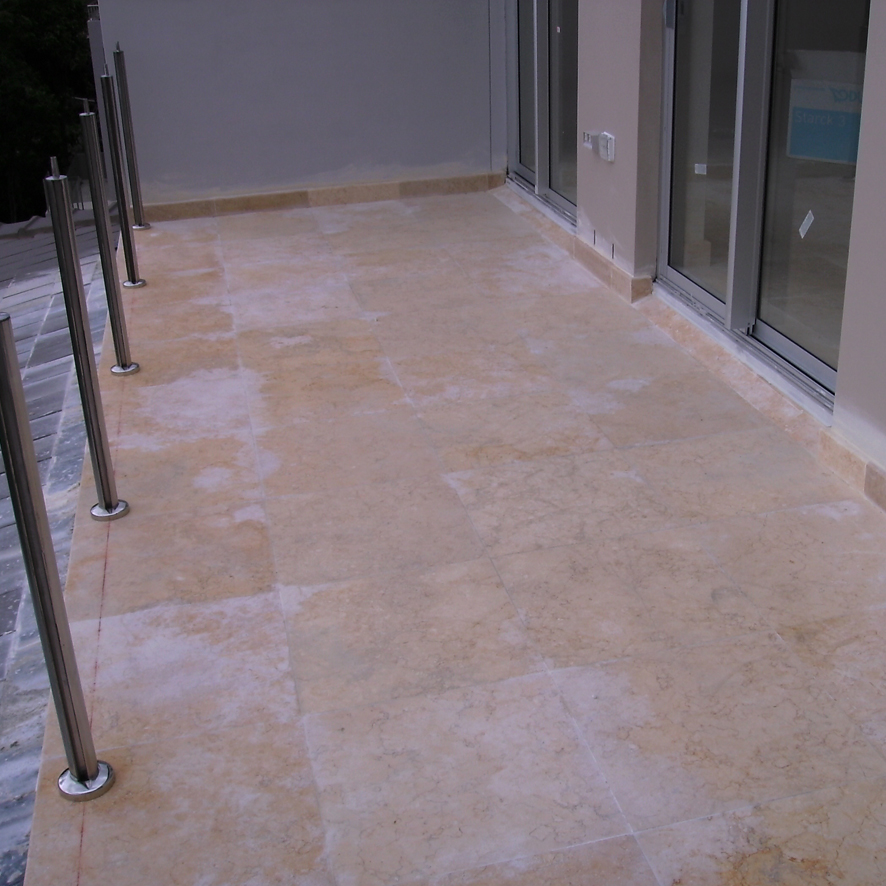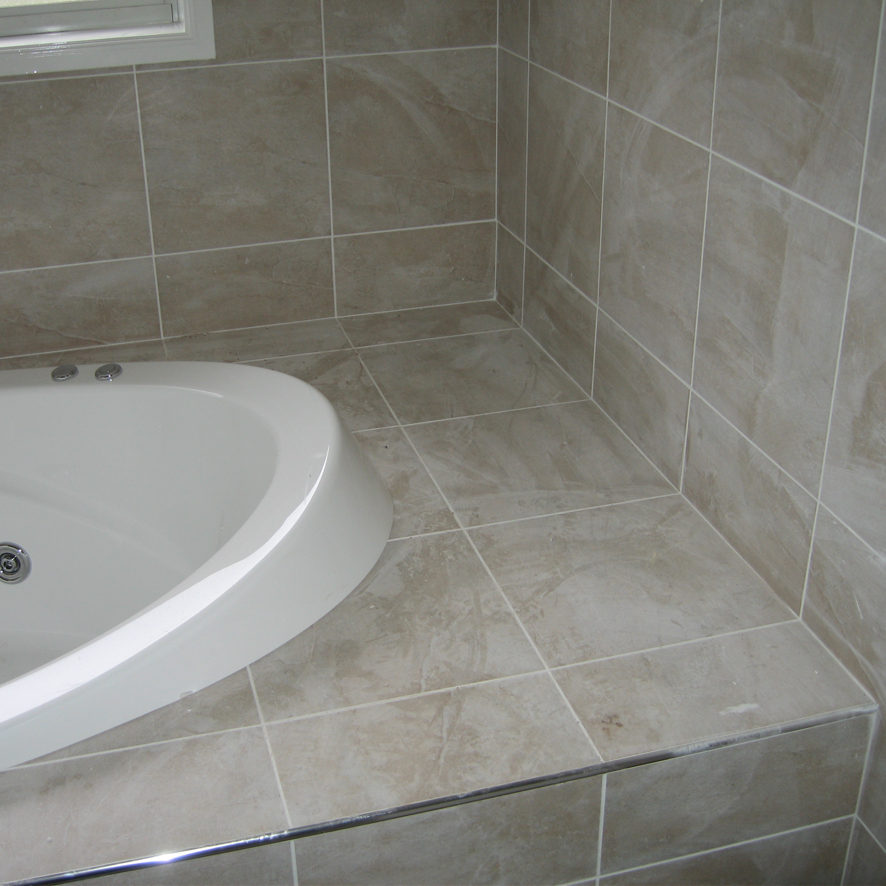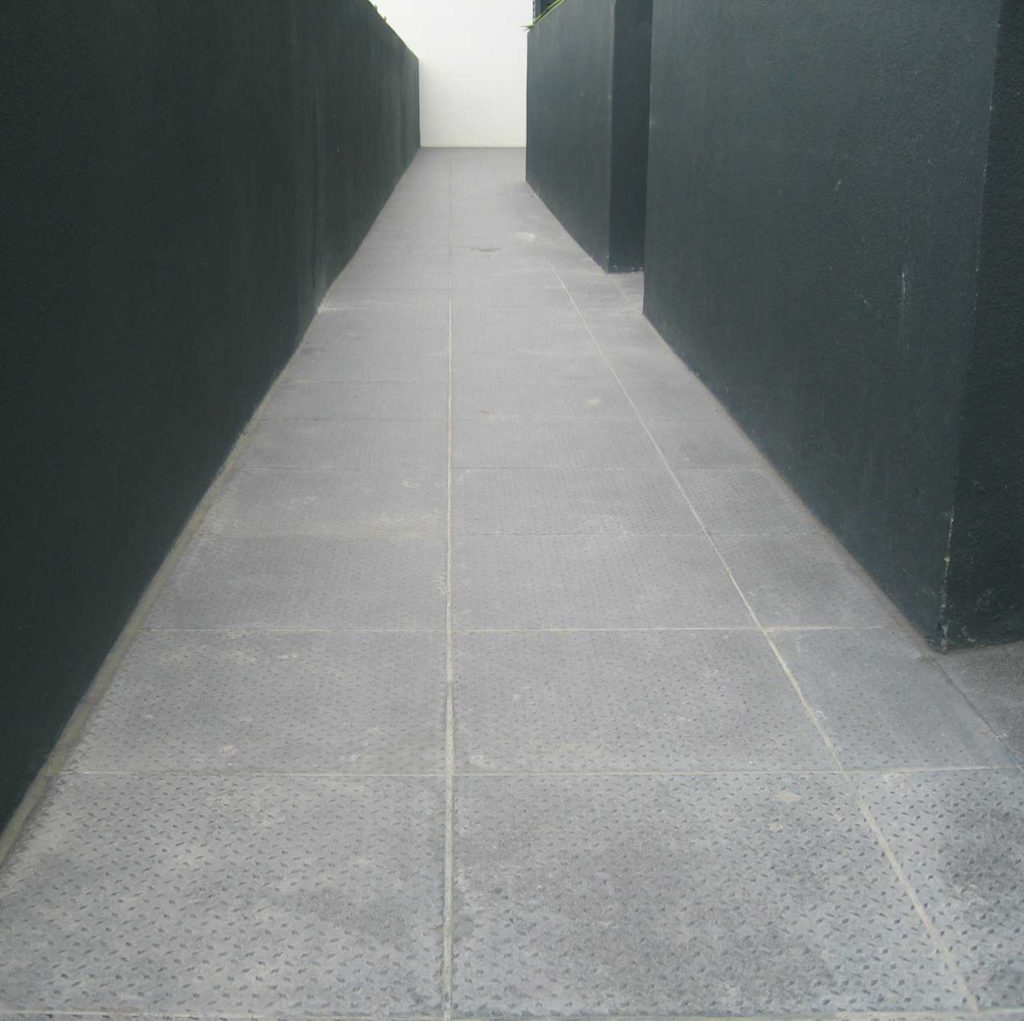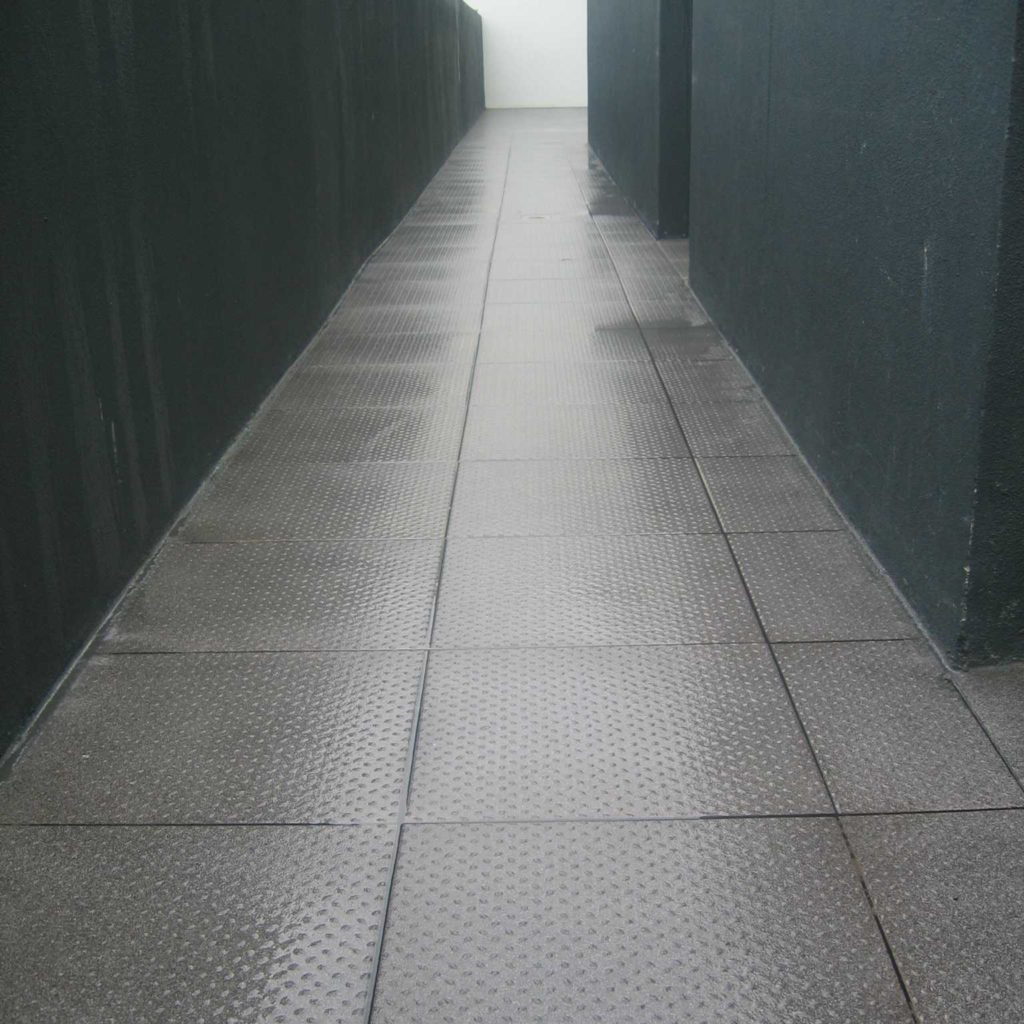No matter if you have a travertine, ceramic, or basalt floor there will be grout joints. Grout is very important, but it is meant to be in the joints, not on the surface of the tiles.
When tilers grout they have to get grout on the tiles, but ideally the excess should be removed very soon thereafter while the grout is still soft and easy to remove. If the grout is not removed quickly enough or well enough, a thin layer of haze is often the result.
Grout haze can sometimes be seen, and sometimes felt, but no matter how thick or visible it always create issues – becoming progressively worse the longer it is left to cure.
Grout is generally absorbent, and If there is a layer of grout haze on the tiles once cured the grout becomes very hard, marking it difficult to remove. This absorbent surface layer catches dirt and grime and discolours, and generally makes the whole installation very difficult to clean. Grout haze can turn easy-to-clean tiles into impossible-to-clean tiles.
Slique can remove grout haze, whether it is cementitious, epoxy, or modified. Once removed from the surface the tiles will look how they are meant to look, and be much easier to keep clean. We have fixed many problems for people who thought that their tiles were defective when in fact it was just grout haze creating their issues.
The best way to determine if grout haze could be a problem for you would be to compare the look, feel, and cleanability of your laid surface to a clean unlaid tile. The difference is often grout haze and can be fixed.

Grout haze doesn’t just occur on floors – it can be anywhere grout is applied This corridor in a commercial building had extremely bad grout haze After removal of the grout haze, the tiles looked better and were easier to clean


